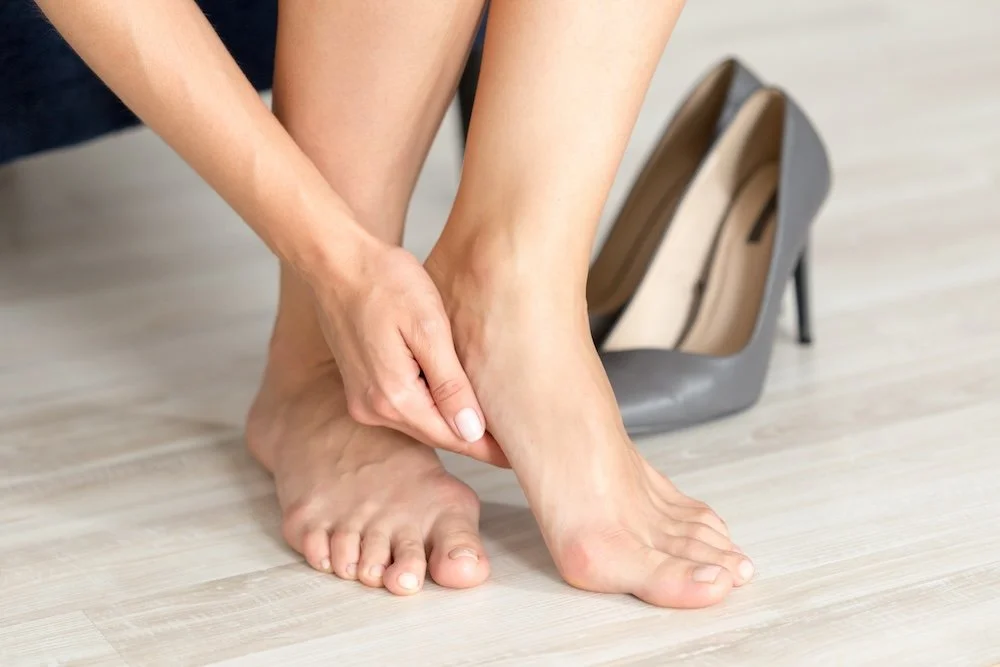Step Toward Comfort: Understanding and Correcting Bunions
If you're experiencing foot pain or noticing changes in your big toe, you might be dealing with a bunion.
Understanding this common condition and the treatment options available can be your first step toward lasting relief and improved mobility.
What Exactly is a Bunion?
A bunion, medically known as hallux valgus, is more than just a visible bump on your foot. It's a progressive structural deformity that occurs at the base of your big toe joint, where the metatarsal bone connects to the first toe bone. This condition involves the bones of the foot gradually shifting out of proper alignment, leading to the characteristic bony protrusion and often discomfort.
What Causes Bunions to Develop?
Bunions can arise from a combination of factors, often genetic and environmental:
Inherited Foot Structure: Many people inherit a specific foot type that makes them more prone to developing bunions. It's not the bunion itself that's inherited, but the foot mechanics that contribute to its formation.
Footwear Choices: Tight-fitting shoes, especially high heels with pointed toes, are a significant contributing factor to this issue. These types of shoes can crowd the toes and force them into an unnatural position, accelerating bunion development.
Foot Injuries: Trauma or injuries to the foot can sometimes lead to misalignment, which can result in bunions.
Medical Conditions: Certain medical conditions, such as inflammatory arthritis (e.g., rheumatoid arthritis), can also increase the risk of bunions.
Recognizing the Symptoms
The symptoms of a bunion can vary in severity but commonly include:
Pain: Aching or throbbing pain around the big toe joint is a frequent complaint, often worsened by activity or wearing shoes.
Swelling and Redness: Inflammation can occur around the affected joint, leading to visible swelling and redness.
Noticeable Bump: The most evident symptom is the distinct bony bump on the side of the foot at the base of the big toe.
Difficulty Wearing Shoes: As the bunion progresses, finding comfortable footwear can become increasingly challenging, and certain shoes may exacerbate the pain.
Limited Movement: You might experience a reduced range of motion in your big toe.
Advanced Bunion Correction: VIRTUGUIDE™ at Dakota Medical
While conservative measures like wider shoes, orthotics, and pain medication can help manage symptoms, surgical correction is often recommended for significant bunions that cause persistent pain and interfere with daily life.
At Dakota Medical, Dr. Albers offers advanced bunion correction using VIRTUGUIDE™, an innovative Depuy Synthes technology. This cutting-edge system leverages Artificial Intelligence (AI) and patient-specific data to plan and guide Lapidus bunion correction surgery meticulously.
Here's how VIRTUGUIDE™ enhances the surgical process:
AI-Powered Pre-operative Planning: The AI-powered software assists surgeons in creating a precise, customized surgical plan tailored to each patient's unique foot anatomy and deformity. This detailed planning helps optimize surgical outcomes.
Patient-Matched Correction Kit: The system utilizes a specialized patient-matched correction kit, which aids in executing the surgical procedure with high accuracy, ensuring the bones are realigned effectively according to the customized plan.
This advanced approach allows for a more precise and personalized surgical experience, aiming for optimal correction and a smoother recovery.
Dr. Aaron Albers, Dakota Medical
Take the Next Step Toward Relief
If bunion pain is impacting your quality of life, don't wait to seek professional evaluation. Dr. Albers specializes in the conservative and surgical treatment of foot and ankle disorders and is dedicated to providing comprehensive care that utilizes the latest technologies to help you regain comfort and mobility.
Your journey toward pain-free feet starts here.
Schedule a consultation and discuss your bunion correction options.




